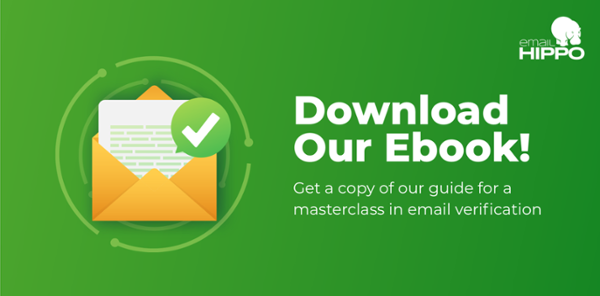Soft bounce vs. hard bounce: what's the difference in email marketing?
 Lisa
Lisa

The first and most important key to making your email campaigns successful is ensuring deliverability to your contacts. If your messages aren't getting through to prospects, then it really doesn't matter how well-crafted your content is.
This is where bounce rate comes into the picture. There are actually two kinds of email bounces you need to keep an eye on: hard bounces and soft bounces. Let's talk about the difference between these two terms, and how you can keep your total email bounce rate as low as possible.
What's the difference between your hard and soft email bounce rate?
When an email bounces, it means it can't be delivered to an inbox. However, there could be any number of reasons for an email bounce. Some reasons are permanent, whereas others are temporary. That key difference is what separates hard bounces from soft ones.
What is a hard bounce?
A hard bounce occurs when an email can't be delivered to an inbox for a permanent reason. Some common reasons for a hard bounce include the following:
- The email address is a fake address, and doesn't actually exist
- The email address in your system is misspelled (so again, it doesn't actually exist as listed by your system)
- The email recipient's server won't accept any emails at all
Whatever the case may be, a hard bounce means your emails can't currently be delivered to the target inbox, and they will never be delivered in the future.
What is a soft bounce?
Soft bounces are different from hard bounces because they're caused by factors that could change in the future. Here are just a few of the reasons why your email may experience a soft bounce:
- Your email file might be too large to deliver
- The targeted inbox may be full
- The inbox may be incorrectly configured, and is thus unable to receive your messages
- The email address may be inactive
- The message may be blocked due to content
- The email cannot be relayed between email servers
- The email doesn't meet the server's anti-spam or anti-virus requirements
In all of these situations, there's a possibility that the email will be deliverable to the inbox at a future time. Therefore, you may want to hold off from immediately deleting soft bounce addresses from your database.
Find out more about bounce rate and what it means for your marketing campaigns.
How to avoid a high email bounce rate
It's always a good idea to keep your overall bounce rate under 2%, if possible. One big reason why this is so important is that many internet service providers (ISPs) won't deliver any messages from senders with a poor sender reputation - and if you keep sending out a ton of undeliverable messages, then you'll quickly develop a reputation as a "spammer."
The question is, how can you avoid a high bounce rate? First of all, regularly review bounce details in your email campaign report. Most email marketing platforms (like HubSpot and Mailchimp) will provide you with receipts for your bounces. Once you have those details in front of you, you can look for email addresses that have repeatedly bounced, and then manually scrub them from the system. (Please note that many platforms will automatically remove hard bounce addresses from your database, but may keep soft bounce addresses for a while.)
In addition, keep looking for ways to validate your contacts' email addresses. First-party data is usually the best way to obtain new email addresses, but you need to have a system in place that will prevent prospects from giving you a fake email address in return for content.
Checking your email lists is one of the best ways to combat high bounce rates. Our email verification service can show you the email addresses that will bounce, so you can exclude them from your email campaign lists. It will also show you the email addresses that might bounce, so you can decide on the best approach to take with them.
Learn more in our definitive guide
If you have more questions about how to lower your bounce rate, be sure to download Email Hippo's definitive guide to email verification today.

